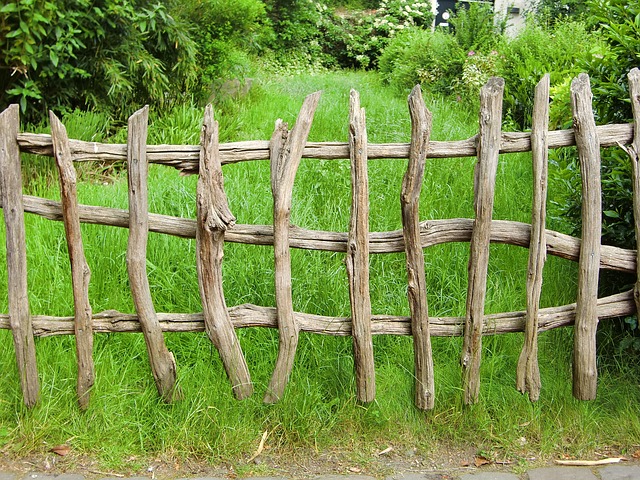Looking to enhance your New Bedford, Massachusetts property with a DIY fence installation? This comprehensive guide is your perfect companion. From understanding local regulations and selecting durable materials to mastering measurement and step-by-step assembly, we’ve got you covered. Discover the key tips and tricks for a successful project that complements your home’s aesthetic and increases its value.
- Understanding Your New Bedford Fence Options
- Measuring and Planning for Your Fence Project
- Choosing the Right Materials for Durability
- Step-by-Step Guide to DIY Fence Installation
- Local Regulations and Permits: What You Need to Know
Understanding Your New Bedford Fence Options
When it comes to DIY fence installation, New Bedford homeowners have several options to choose from, each with its own unique characteristics and benefits. Wood fences are a popular choice for their natural beauty and versatility, offering various styles like picket, privacy, or post-and-rail. These fences require regular maintenance but can last for decades with proper care.
On the other hand, chain-link fences are durable, cost-effective, and suitable for security purposes. They come in different mesh sizes and can easily be installed without professional help. Concrete or masonry fences provide a sleek, modern look and offer excellent privacy. While they might be more challenging to install, these fences are virtually maintenance-free and can enhance the curb appeal of your property significantly.
Measuring and Planning for Your Fence Project
Before breaking ground on your DIY fence installation project in New Bedford, proper planning is key. Start by measuring the perimeter of the area where you want to install the fence. Use a tape measure to ensure accurate readings, taking note of any curves or corners that may require adjustments in material length. Create a detailed plan, sketching out the layout and identifying potential challenges like trees, utility lines, or existing structures. This will help you determine the best type of fence for your space, whether it’s a privacy fence, picket fence, or something more decorative.
In addition to physical measurements, consider local regulations and property boundaries. Check with your city or town hall to understand any restrictions or guidelines regarding fence height, materials, and placement. Ensure you have the necessary permits before beginning construction to avoid any legal issues and potential fines. Proper planning will save time, money, and frustration in the long run, ensuring your DIY fence installation is a successful and satisfying project.
Choosing the Right Materials for Durability
When it comes to DIY fence installation, selecting the right materials is key to ensuring longevity and durability. For New Bedford homeowners, opting for high-quality, weather-resistant options is essential given the area’s varying climate conditions. Wood, while aesthetically pleasing, requires regular maintenance to withstand harsh winters and hot summers. Consider pressure-treated lumber, which is treated with chemicals to increase resistance to rot, mold, and insects. Alternatively, vinyl fencing offers low-maintenance benefits, retaining its color and form for years without peeling or warping.
For extra durability, steel or aluminum fences are strong and resistant to decay. These materials are particularly suitable for areas prone to storms and high winds. When choosing, factor in your budget, desired aesthetics, and the fence’s expected lifespan. Remember, investing in robust materials will result in a longer-lasting barrier that requires less frequent repairs or replacements.
Step-by-Step Guide to DIY Fence Installation
Installing a fence yourself can be a rewarding project for New Bedford homeowners looking to enhance their outdoor space. Here’s a straightforward guide to tackle the task:
1. Plan and Measure: Start by deciding on the type of fence best suited for your property. Measure the perimeter carefully, marking where posts will go. Create a detailed plan, considering any gates or openings you’ll need.
2. Prepare the Ground: Clear the area of any debris, plants, or obstacles. Dig holes for the fence posts, ensuring they’re deep enough to provide stability (typically about one-third of the post’s height). Use a level to ensure each hole is horizontal and even.
Local Regulations and Permits: What You Need to Know
Before beginning any DIY fence installation project in New Bedford, Massachusetts, it’s crucial to familiarize yourself with local regulations and permit requirements. Each town or city often has specific guidelines regarding property alterations, including fence construction. These rules are designed to maintain neighborhood aesthetics, ensure structural safety, and protect community resources.
Homeowners should check with the local building department or town clerk’s office to understand the permitting process. This typically involves submitting an application, providing detailed plans of the proposed fence, and possibly paying a fee. It’s essential to adhere to these regulations not only to avoid legal issues but also to ensure your fence is safe, durable, and compliant with New Bedford’s aesthetic standards.
